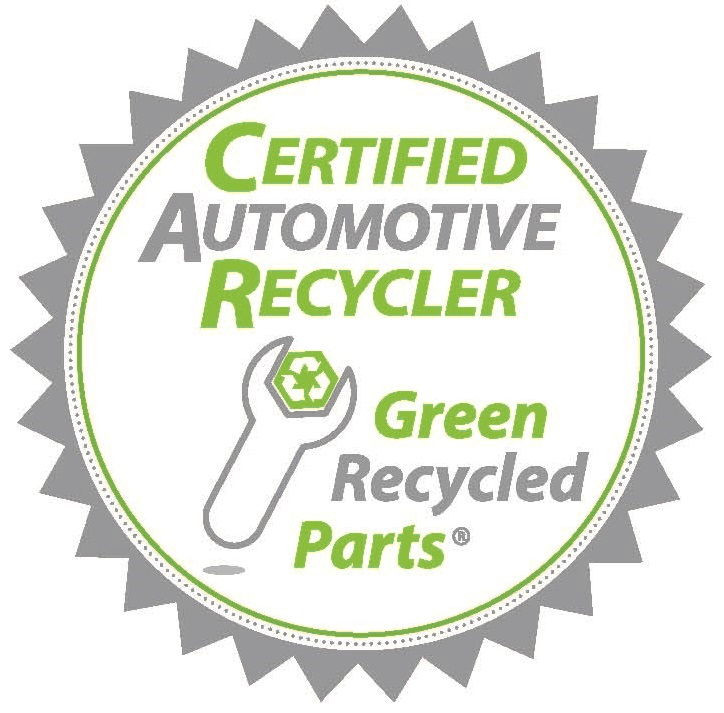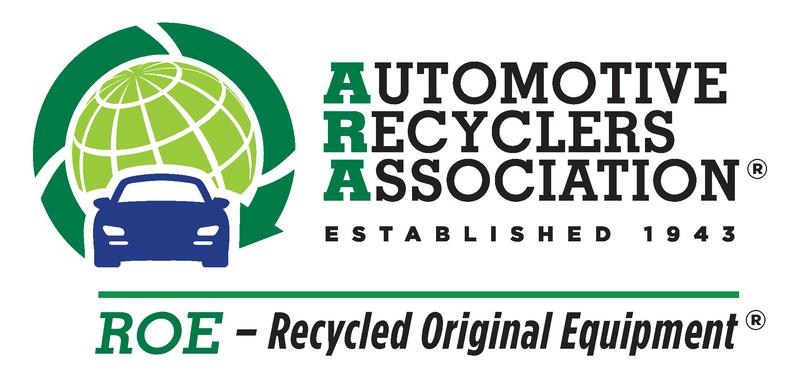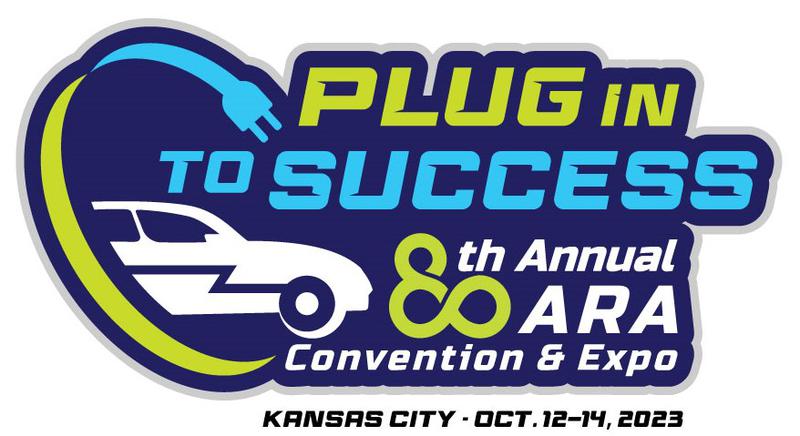The fact sheets are designed to assist automotive recyclers with operating their businesses and managing their wastes in compliance with the environmental laws in the USA and are generally applicable in other countries too.
ECAR tries to provides timely and essential information on this topic, but be aware that other rules, such as local regulations and recent changes, may apply. Read the Disclaimer. Return to the ECAR Virtual Tour.
What You Need to Know
The Clean Water Act requires virtually every automotive salvage or recycling operator to obtain a Storm Water permit or a Certificate of No Exposure (only if no vehicles or parts are stored outside). Therefore, if you own or operate an automotive salvage facility you are required to maintain a stormwater permit.
Material handling and storage, equipment maintenance and cleaning, and other activities at industrial facilities are often exposed to the weather. Runoff from rainfall or snowmelt that comes in contact with these activities can pick up pollutants, and transport them directly to a nearby river, lake, or coastal water or indirectly via a storm sewer or infiltration and degrade water quality. The term "stormwater" refers to this type of runoff.
Stormwater permits are required because precipitation that comes in contact with metals, oil and grease, used batteries and tires, and other materials common at automotive recycling facilities may cause pollution that can affect the local community's ability to swim and fish in lakes, rivers, and streams. For example, the mercury that still may be found in old automotive switches is toxic to humans and to the fish they may catch and eat. By taking some common sense actions under the stormwater permit to prevent contamination, you can provide your community with environmental benefits to complement the value of recycling end-of-life vehicles.
Regulations
In 1987, Congress mandated that "industrial" sites obtain stormwater permits through the National Pollutant Discharge Elimination System or NPDES program. In 1990, EPA defined "industrial" businesses by Standard Industrial Classification or SIC code to maintain a permit. SIC code 5015 includes "salvage yards and automotive recyclers" and is usually in the same permit as metal recycling. Federal regulations at 40 CFR 122.26(b)(14)(i)-(xi) require stormwater discharges associated with specific categories of industrial activity to be covered under NPDES permits.
What is NPDES?
The NPDES permit program addresses water pollution by regulating point sources that discharge pollutants to waters of the United States. EPA authorized state agencies to perform NPDES or stormwater permitting, administrative, and enforcement aspects of the program. Stormwater discharges associated with specific categories of industrial activity to be covered under NPDES permits (unless otherwise excluded). One of the categories—construction sites that disturb five acres or more—is generally permitted separately because of the significant differences between those activities and the others. The other 11 categories of regulated industrial activities include:
Category Six (vi): Metal scrapyards, salvage yards, automobile junkyards, and battery reclaimers
EPA has developed a fact sheet for each of the 29 industrial sectors regulated by the MSGP. Each fact sheet describes the types of facilities included in the sector, typical pollutants associated with the sector, and types of stormwater control measures used to minimize the discharge of the pollutants. Sector M: Automobile Salvage Yards (PDF)
Storm Water Pollution Prevention Plan (SWPPP)
A storm water pollution prevention plan (SWPPP) is required for all storm water permits. The plan must be completed prior to submitting the stormwater permit application known as the "Notice of Intent." The plan should be kept on-site at the facility or construction site that generates the storm water discharge. EPA has provided guidance on developing an SWPPP:
The ARA Certified Auto Recyclers program has also developed a template SWPPP to make the process easy for auto recyclers:
Your SWPPP must include a description of potential sources of stormwater pollution and measures and controls, including best management practices (BMPs) that will be implemented at your facility to prevent or minimize stormwater contamination. When developing the SWPPP, you must consider the use of certain BMPs that EPA considers applicable to specific areas such as vehicle dismantling/storage areas and fluids storage areas. However, you do not need to limit yourself to just these BMPs.
Best Management Practices (BMPs)
Most regulations tell you what you have to do to be in compliance, but they don't explain how to do it. That's where "best management practices" come into play. BMPs are proven methods that help you to get into compliance and stay there. The following BMPs are recommended for stormwater pollution prevention.
The following is a list of BMPs for auto salvage facilities identified by EPA when the stormwater regulations were published:
Dismantling and vehicle maintenance:
- Drain all fluids from vehicles upon arrival at the site. Segregate the fluids and properly store or dispose of them.
- Maintain an organized inventory of materials used in the maintenance shop.
- Keep waste streams separate (i.e. waste oil and solvents). Non-hazardous substances that are contaminated with hazardous substances are considered a hazardous waste.
- Recycle antifreeze, gasoline, used oil, mineral spirits and solvents.
- Dispose of greasy rags, oil filters, air filters, batteries, spent coolants and degreasers properly.
- Label and track the recycling of waste material.
- Drain oil filters before disposal or recycling.
- Store cracked batteries in a nonleaking secondary container.
- Promptly transfer used fluids to the proper container.
- Do not pour liquid waste down floor drains, sinks or outdoor storm drains.
- Plug floor drains that are connected to the storm or sanitary sewer. If necessary, install a sump that is pumped regularly.
- Inspect the maintenance area regularly for proper implementation of control measures.
- Filter stormwater discharges with devices such as oil-water separators.
- Train employees on proper waste control and disposal procedures.
Outdoor vehicle, equipment and parts storage:
- Use drip pans under all vehicles and equipment waiting for maintenance and during maintenance.
- Store batteries on impervious surfaces. Curb, dike or berm this area.
- Confine storage of parts, equipment and vehicles to designated areas.
- Cover all storage areas with permanent cover (roof) or temporary cover (canvas tarps).
- Inspect the storage yard for drip pans and other problems regularly.
Vehicle, equipment and parts washing areas:
- Avoid washing parts or equipment outside.
- Use phosphate-free biodegradable detergents.
- Consider using detergent-based or water-based cleaning systems in place of organic solvent degreasers.
- Designate an area for cleaning activities.
- Contain steam cleaning wash waters or discharge under an applicable NPDES permit.
- Ensure that wash waters drain well, and are not draining into a MS4 or surface water body.
- Do not discharge wastewater into a dry well.
- All discharges authorized by the general stormwater permit must fully meet all applicable water quality standards.
- Inspect cleaning area regularly.
- Install curbing, berms or dikes around cleaning areas.
- Liquid storage in above ground containers:
- Maintain good integrity of all storage containers.
- Install safeguards (such as berms) against accidental releases in the storage area.
- Inspect storage tanks to detect potential leaks. Perform preventative maintenance.
- Inspect piping systems for failures or leaks.
- Train employees on proper filling and transfer procedures.
Improper connection with storm sewers:
- Plug all floor drains if it is unknown whether the connection is to storm sewer or sanitary sewer. Alternatively, install a sump that is pumped regularly.
- Update facility schematics to accurately reflect all plumbing connections.
- Install a safeguard against vehicle wash waters and parts cleaning water entering the storm sewer unless permitted.
- Maintain and inspect the integrity of all underground storage tanks; replace when necessary.
Fact Sheet Status and Disclaimer
The following compliance assistance information for the state is subject to all of the warranties and disclaimers associated with this internet website [Read full disclaimer]. Please note that this information has been submitted or will be submitted to the state agencies responsible for implementing environmental laws and regulations for their review and comment. This note is provided only for your informational purposes and does not change or alter any warranties or disclaimers, including, for example, your responsibility to seek appropriate legal or technical assistance to interpret the state's laws as needed.
Stormwater Resource Locator
All vehicle dismantling facilities in the United States (except those in a combined sewer service area or facilities that do not discharge stormwater from their property) are required by the Clean Water Act to obtain a stormwater permit either from the U.S. Environmental Protection Agency or from an appropriate state agency. For more information on EPA’s stormwater regulations, please see: https://www.epa.gov/npdes
Federal EPA National Pollutant Elimination Discharge System (NPDES) Stormwater Regulations. EPA defines automobile salvage yards and scrap recycling facilities as industries eligible to use the multi-sector general permit (MSGP).
Sector M: Auto Salvage Yards
Included in this permitting process are requirements to file a Notice of Intent (NOI) with the appropriate state agency and to prepare a Storm Water Pollution Prevention Plan (SWPPP) to describe how you will address your facility’s stormwater issues.
Self-Audit Checklist
An inspector may check the facility for compliance with environmental regulations. Conducting a "self-audit" will identify and correct problems before they result in penalties.
Use the following list to audit your stormwater permit:
Does your facility have a stormwater permit?
Verify that your facility has a current stormwater permit issued by the state if your facility falls under the requirement.
Has your facility developed and implemented a stormwater pollution prevention plan or SWPPP?
Verify that a SWPPP has been prepared and is available on-site for inspection. Review the plan and verify that BMPs have been implemented. Note: If the facility is inspected, the SWPPP will be checked against all requirements in the permit. It is required that all SWPPPs be fully compliant with the permit.
Annual dry weather inspection and quarterly inspections must be logged.
Review your records to verify that visual observations and sampling have been performed.
Has your facility conducted stormwater sampling?
If required by your state permit, collect stormwater runoff samples and submit to the laboratory for analysis for state permit parameter per frequency such as annual or quarterly.
ECAR Fact Sheet STORM WATER




